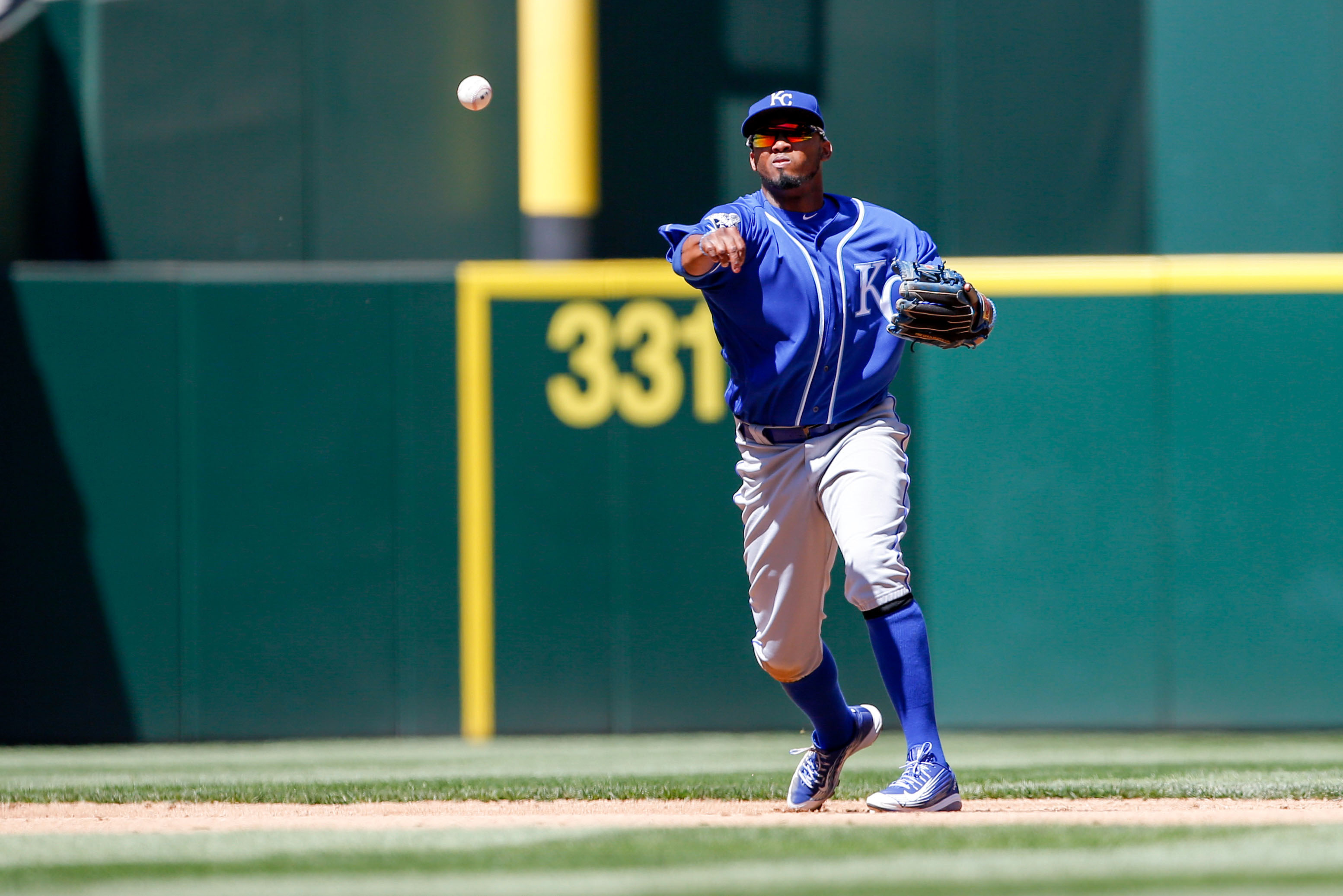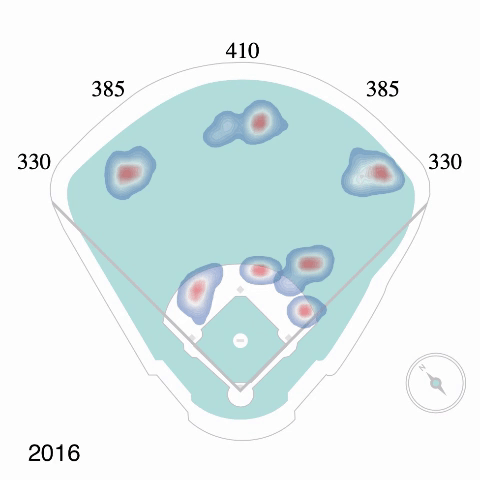It was obvious almost from the first game of the 2018 season: The Royals were employing the shift more than they ever had in the past.
Indeed, they were shifting a lot, ranking second among teams using this particular alignment through the first month of the season. Then, they decided to pull back as they felt the shift was costing too many hits against their pitchers. Still, the Royals didn’t completely turn their back on this new school defensive alignment.
The final numbers are in. No team increased their use of the shift more in 2018 than the Royals.
| Year | Royals Shift % | MLB Rank |
| 2016 | 5.5% | 28 |
| 2017 | 6.5% | 25 |
| 2018 | 27.4% | 5 |
The only other team to see such an increase in percentage of plays shifted would probably be the Marlins, who ranked dead last out of all teams two seasons ago, only to break into the top 10 (at number nine) this season.
You could say the Royals increase in utilizing the shift on the field represented a shift in organizational defensive philosophy. The Royals have long employed an analytics department and have over time incorporated their input into game preparation. This was perhaps the most outwardly obvious sign the team was serious about crafting the data available to them to gain a competitive advantage.
Not only did the Royals utilize the shift much more than they had in the past, but they deployed their infielders, particularly the shifted position directly between first and second base, differently. In the first two seasons were positioning data is available, against left-handed batters the Royals had the fielder between first and second drop deeper into the outfield. This year, against those lefties, that position generally remained on the infield.
The Royals insisted they didn’t shift as much in previous seasons because, with their superior defense, they didn’t need to. Perhaps there was some merit in this thinking. But second base has always been a position of need until Whit Merrifield established himself. Mike Moustakas and Alcides Escobar have been together on the left side of the infield since 2011. Shifting because Eric Hosmer was no longer on the team seems like a stretch. The likelier explanation was probably since the Royals opened the year knowing they had no realistic shot at a winning record, it felt like the right time to try something new.
Whatever the reason, this was an instance where the Royals were using the data available to them to leverage their matchups. Still, it can be a hard sell. Particularly among pitchers who see balls fall for hits that would have been caught with a traditional defensive alignment. The same could be said for a veteran manager. By the time the Royals had played a couple months, it seemed the old school wasn’t too pleased. From Jeffery Flanagan at MLB.com:
Yost, however, was skeptical.
“It’s hard to tell,” Yost said. “The numbers are there. But the numbers can be deceiving, too.
“If you shift and a guy hits a ground ball right to third — where you had the guy anyway — they consider that successful. It’s a little skewed in their favor.
“We’re looking at it … but for the guys that can fist it the other way, we’re coming back around on it [and not shifting]. It’s not a hard-and-fast [rule] for us now. We’re constantly looking at it.
” … Does it keep someone from hitting homers? Maybe. I’m just not sold on it yet.”
If the shift didn’t work for the Royals, as noted above, it wasn’t for lack of trying on their part. It was the results they couldn’t control that made it seem less than successful. When the Royals defense deployed with three fielders to one side of second base, their pitchers induced a ground ball just 41.9 percent of the time. That was tied with the Red Sox for lowest ground ball rate in baseball when playing with the shift. That, of course, runs counter to the whole purpose of playing three infielders to one side of second. You do that with the goal of having the opposing hitter put the ball on the ground. A line drive or fly ball usually renders the shift moot.
Overall, Royals pitchers got a ground ball on 43.1 percent of all balls in play. That was right at league average and just slightly higher than when they shifted. Perhaps they chose the wrong time, with the wrong makeup of their pitching staff to decide to alter their approach to defensive lineups on the field. Perhaps it would have gone better with a staff that had a proclivity to induce grounders at a greater frequency. More shifts with more grounders almost certainly would equal greater success.
Furthermore, Royals pitchers surrendered hard contact 32.2 percent of the time when their fielders were shifting. That was the fourth highest rate in baseball and the highest in the AL. Hard contact for the batter doesn’t always guarantee success, but it certainly helps the cause. Again, compare that to the Royals pitchers 29.4 percent hard contact rate on all defensive alignments. The Royals surrendered a lot more hard contact when three infielders were positioned to one side of second. Why would that be? The evidence doesn’t exist to point to one reason in particular. Sometimes the baseball gods work in mysterious ways. In this case, the penalty was on the Royals when they shifted.
Still, the shift may work, but when your pitchers are generally below league average, you’re going to get below league average results, no matter where the infielders play. Hopefully, the results from the 2018 edition of the shift won’t deter the Royals from continuing to embrace the evolution of the game going forward. And at some point with an improved pitching staff, they should see improved results.


1 comment on “Shifting on the shift”
Comments are closed.